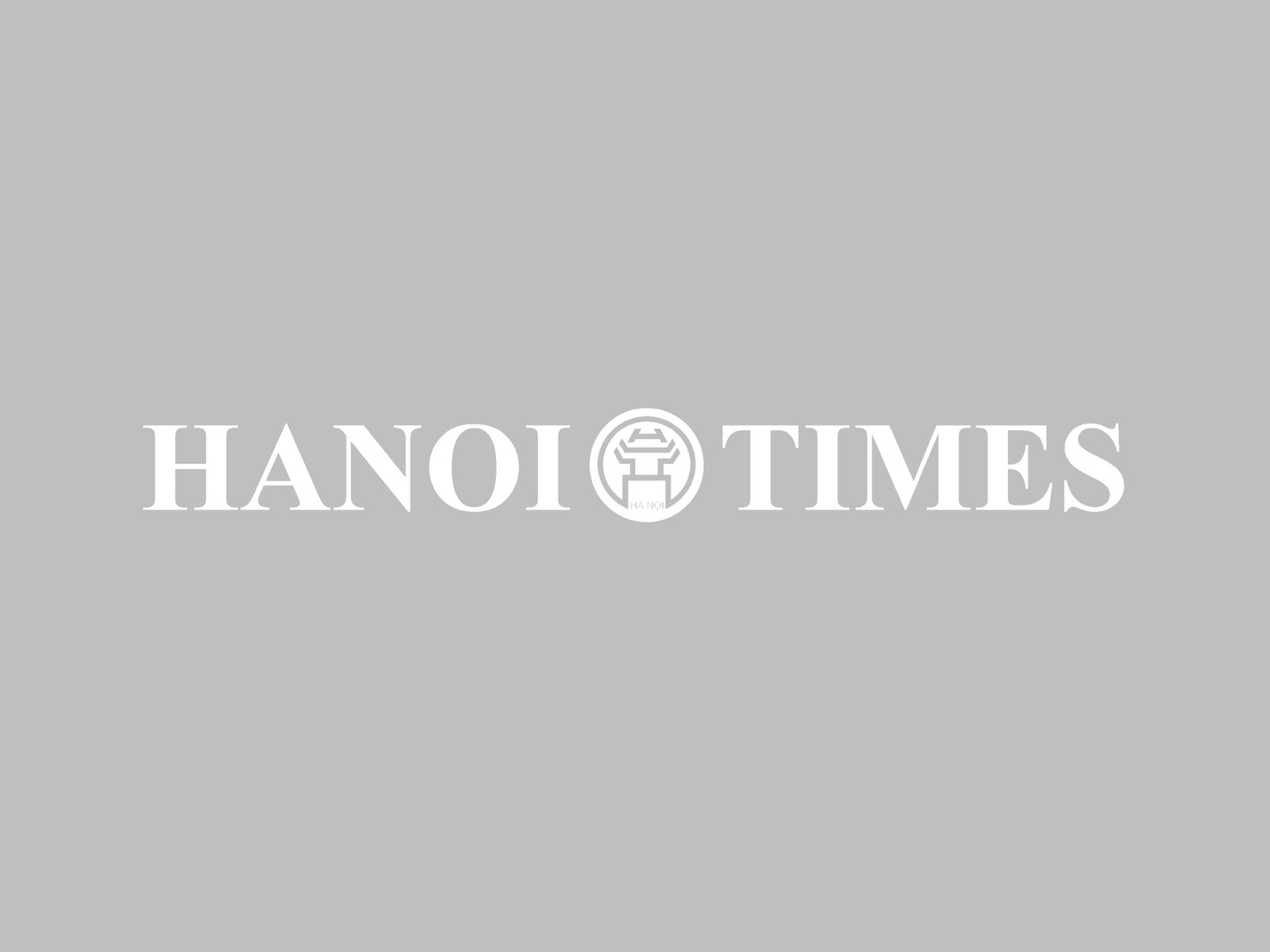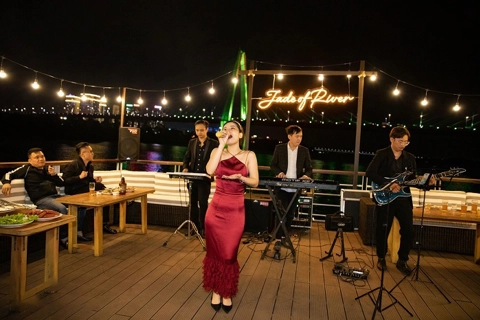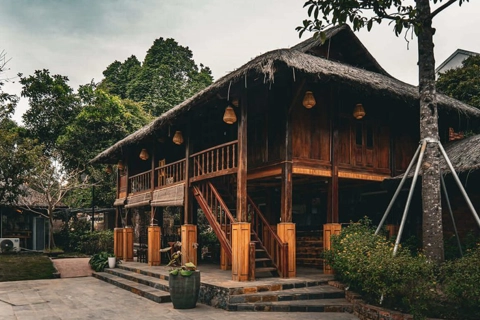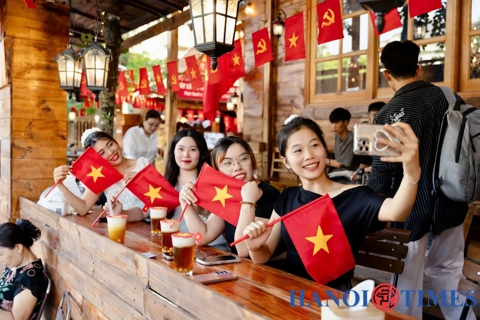Travel
Phu Quoc island under transformation
Jun 09, 2017 / 06:24 PM
Phu Quoc with an area of 567 square kilometers (roughly the size of Singapore), is Vietnam’s largest island.
Phu Quoc together with a group of Vietnamese 22 islands in the Gulf of Thailand make up the Phu Quoc district with a total land area of 590 square kilometers, a district with the highest economic potential of Kien Giang province.
Phu Quoc undergoes daily transformation thanks to the strategic vision of the Party and State translated into many prime-ministerial policies including the development master plan of Phu Quoc island to 2020 (issued in 2004); the Decision on the master plan revision until 2030 with the aim of building Phu Quoc into a special economic-administrative zone (in 2010); the Decision on the promulgation of a number of specific development policies for Phu Quoc Island - Kien Giang (2013) and many decisions on specialized planning such as tourism development, development of sustainable transport system, national strategic planning such as the Vietnam Marine Economic Development Strategy to 2020; socio-economic development master plan of the key southern economic region up to 2020 with orientation to 2030. In 2014, Phu Quoc was recognized as a level 2 municipality, aiming to become a special economic zone directly under the central government.
In 2006, UNESCO recognition of the coastal zone of Kien Giang and its island marine area ((including Phu Quoc island) as a World Biosphere Reserve, made a strong impact on Phu Quoc tourism development.

Today, the once peaceful Phu Quoc island has transformed into a huge construction site as investors are flocking to the island under open and attractive development policies promulgated by the central and provincial governments. The first steps that laid the foundations for a special economic zone directly subjected to the central government’s administration have already been made. A modern international airport is built and inautgurated in December 2016 to the south of the island. Located 10km from Duong Dong town with 45m x 3,000m runway meeting the requirements for taking off and landing of all types of aircrafts including B777, B747-400, A321, A320 planes, the airport replaces the old Duong To airport which was suitable for taking off and landing of only small aircrafts such as Fokker 70 or ATR72.
The transport system, either by sea and land is also in development. An Thoi international port is being built to open a sea route between Phu Quoc and the mainland and from Phu Quoc to other ports of the word. The construction of a 50 km, six lane North-South trunk highway and the the system of secondary roads linking the island towns and villages is being completed as well as the ring road around the island is under construction.
Vingroup's Safari Park in Long Beach, An Thoi, Duong Dong, the Shells Resort & Spa of Tran Thai Group at Ganh Gio, SunGroup's 100ha resort, Long Dien's Grand World project at Khem Beach, the high-end resorts have brought to Phu Quoc a new vitality, new look and a new attraction to lure tourists from everywhere, especially those from abroad. Other resort projects such as the one in in Long Beach of Sao Mai An Giang Group (ASM) will be built soon. According to Phu Quoc Island Development and Investment Management Board, by the end of the third quarter of 2016, 187 projects were (many of which were implemented and put into operation) with a total area of about 7.118ha, with investment capital of more than 35,000 billion dongs.
The pristine Phu Quoc still unaffected by the construction boom is suitable for ecotourism development. Phu Quoc National Park has an area of nearly 29,500 ha, accounting for 49.9% of the total natural area of the island. it includes rich ecosystem such as primeval forest (7.000ha); mangrove forest (17.9ha); melaleuca forest (1.625ha). Especially, Phu Quoc National Park is planned not for timber exploitation but to protect and preserve the values of the environment, ecosystem, natural landscape and biodiversity. At a recent seminar jointly held in Phu Quoc by the Association for Urban Development Planning of Vietnam and Kien Giang Province People's Committee to find solutions for the planning and management of Phu Quoc urban area, many experts have emphasized on the importance of maintaining such special forest ecosystem to avoid the unfortunate mistakes that tourism development in Da Nang and Quang Ninh provinces have committed.
The construction of resort projects is essential to improve the quality of tourist services, but it is necessary to rely on natural terrain to create harmony between artificial creations and the nature.
According to professor Dang Hung Vo, Phu Quoc's development strategy sets out many ambitious goals, but among them, it is necessary to make Phu Quoc distinctive. The outstanding potential of Phu Quoc tourism is the integrity of forest, sea and agriculture ecosystems,. Therefore, the island distinctive feature should be "green" tourism, with the full criteria of green agriculture, green city, green architecture, green energy, green transport. Phu Quoc’s architecture should also be different, bearing the island identity as current high-class hotels and resorts resemble that of other tourism destination, according to a Phu Quoc official. Architecs are now in the search of Phuc Quoc typical architecture.
Dealing with nvironmental issues also poses a challenge to the Phu Quoc authority. Waste disposal, waste water treatment and imminent marine pollution required due attention as most sewage from residential areas is discharged directly into the sea. The island still lacks garbage treatment plant. Sustainable Development in Phu Quoc is not an empty word but it is already receiving awareness in the process of planning, execution and management.
Currently, Phu Quoc is a level 2 municipality full of tourism potentials. ,
Historic cultural relics such as Nguyen Trung Truc Temple in Ganh Dau, Cay Dua Jail in An Thoi, Dinh Cau in Duong Dong, or Gia Long well, grave of Prince Canh are attractive destinations for visitors. However, central residential areas such as Duong Dong and An Thoi are still small towns, which are under a poor urbanization with confusing architecture. Infrastructure such as electricity and safe water are still insufficient, unable to serve tourists. So now, building an urban government with a new mind, capable of managing a special economic zone is imperative. Kien Giang provincial authority is determined to build Phu Quoc into a smart metropolis. But to be a smart metropolis, there must be intelligent urban government with intelligent people who are competent, dedicated and transparent. Information technology is only a tool in administrative reform, facilitating urban governance, and creating favorable access to administrative procedures, but it cannot replace human ideas.
Tourism is not the only potential which is being exploited. Other resources are being harnessed to make Phu Quoc an economic hub.
The island is is rich in marine economy. Pepper, fish sauce, oyster raising for pearl and pearl processing are the island specialties.
Phu Quoc development lesson is not only the lesson for Kien Giang province, but the whole country. The development strategy of Phu Quoc is not aiming to build a Singapore replica because Phu Quoc has its own natural conditions and unique identity. Its starting point is in accordance with the development process of Vietnam in the new era.
And that is the distinction to create the prosperous Phu Quoc special economic zone in the future, although the way ahead still challenging.
Phu Quoc undergoes daily transformation thanks to the strategic vision of the Party and State translated into many prime-ministerial policies including the development master plan of Phu Quoc island to 2020 (issued in 2004); the Decision on the master plan revision until 2030 with the aim of building Phu Quoc into a special economic-administrative zone (in 2010); the Decision on the promulgation of a number of specific development policies for Phu Quoc Island - Kien Giang (2013) and many decisions on specialized planning such as tourism development, development of sustainable transport system, national strategic planning such as the Vietnam Marine Economic Development Strategy to 2020; socio-economic development master plan of the key southern economic region up to 2020 with orientation to 2030. In 2014, Phu Quoc was recognized as a level 2 municipality, aiming to become a special economic zone directly under the central government.
In 2006, UNESCO recognition of the coastal zone of Kien Giang and its island marine area ((including Phu Quoc island) as a World Biosphere Reserve, made a strong impact on Phu Quoc tourism development.

Today, the once peaceful Phu Quoc island has transformed into a huge construction site as investors are flocking to the island under open and attractive development policies promulgated by the central and provincial governments. The first steps that laid the foundations for a special economic zone directly subjected to the central government’s administration have already been made. A modern international airport is built and inautgurated in December 2016 to the south of the island. Located 10km from Duong Dong town with 45m x 3,000m runway meeting the requirements for taking off and landing of all types of aircrafts including B777, B747-400, A321, A320 planes, the airport replaces the old Duong To airport which was suitable for taking off and landing of only small aircrafts such as Fokker 70 or ATR72.
The transport system, either by sea and land is also in development. An Thoi international port is being built to open a sea route between Phu Quoc and the mainland and from Phu Quoc to other ports of the word. The construction of a 50 km, six lane North-South trunk highway and the the system of secondary roads linking the island towns and villages is being completed as well as the ring road around the island is under construction.
Vingroup's Safari Park in Long Beach, An Thoi, Duong Dong, the Shells Resort & Spa of Tran Thai Group at Ganh Gio, SunGroup's 100ha resort, Long Dien's Grand World project at Khem Beach, the high-end resorts have brought to Phu Quoc a new vitality, new look and a new attraction to lure tourists from everywhere, especially those from abroad. Other resort projects such as the one in in Long Beach of Sao Mai An Giang Group (ASM) will be built soon. According to Phu Quoc Island Development and Investment Management Board, by the end of the third quarter of 2016, 187 projects were (many of which were implemented and put into operation) with a total area of about 7.118ha, with investment capital of more than 35,000 billion dongs.
The pristine Phu Quoc still unaffected by the construction boom is suitable for ecotourism development. Phu Quoc National Park has an area of nearly 29,500 ha, accounting for 49.9% of the total natural area of the island. it includes rich ecosystem such as primeval forest (7.000ha); mangrove forest (17.9ha); melaleuca forest (1.625ha). Especially, Phu Quoc National Park is planned not for timber exploitation but to protect and preserve the values of the environment, ecosystem, natural landscape and biodiversity. At a recent seminar jointly held in Phu Quoc by the Association for Urban Development Planning of Vietnam and Kien Giang Province People's Committee to find solutions for the planning and management of Phu Quoc urban area, many experts have emphasized on the importance of maintaining such special forest ecosystem to avoid the unfortunate mistakes that tourism development in Da Nang and Quang Ninh provinces have committed.
The construction of resort projects is essential to improve the quality of tourist services, but it is necessary to rely on natural terrain to create harmony between artificial creations and the nature.
According to professor Dang Hung Vo, Phu Quoc's development strategy sets out many ambitious goals, but among them, it is necessary to make Phu Quoc distinctive. The outstanding potential of Phu Quoc tourism is the integrity of forest, sea and agriculture ecosystems,. Therefore, the island distinctive feature should be "green" tourism, with the full criteria of green agriculture, green city, green architecture, green energy, green transport. Phu Quoc’s architecture should also be different, bearing the island identity as current high-class hotels and resorts resemble that of other tourism destination, according to a Phu Quoc official. Architecs are now in the search of Phuc Quoc typical architecture.
Dealing with nvironmental issues also poses a challenge to the Phu Quoc authority. Waste disposal, waste water treatment and imminent marine pollution required due attention as most sewage from residential areas is discharged directly into the sea. The island still lacks garbage treatment plant. Sustainable Development in Phu Quoc is not an empty word but it is already receiving awareness in the process of planning, execution and management.
Currently, Phu Quoc is a level 2 municipality full of tourism potentials. ,
Historic cultural relics such as Nguyen Trung Truc Temple in Ganh Dau, Cay Dua Jail in An Thoi, Dinh Cau in Duong Dong, or Gia Long well, grave of Prince Canh are attractive destinations for visitors. However, central residential areas such as Duong Dong and An Thoi are still small towns, which are under a poor urbanization with confusing architecture. Infrastructure such as electricity and safe water are still insufficient, unable to serve tourists. So now, building an urban government with a new mind, capable of managing a special economic zone is imperative. Kien Giang provincial authority is determined to build Phu Quoc into a smart metropolis. But to be a smart metropolis, there must be intelligent urban government with intelligent people who are competent, dedicated and transparent. Information technology is only a tool in administrative reform, facilitating urban governance, and creating favorable access to administrative procedures, but it cannot replace human ideas.
Tourism is not the only potential which is being exploited. Other resources are being harnessed to make Phu Quoc an economic hub.
The island is is rich in marine economy. Pepper, fish sauce, oyster raising for pearl and pearl processing are the island specialties.
Phu Quoc development lesson is not only the lesson for Kien Giang province, but the whole country. The development strategy of Phu Quoc is not aiming to build a Singapore replica because Phu Quoc has its own natural conditions and unique identity. Its starting point is in accordance with the development process of Vietnam in the new era.
And that is the distinction to create the prosperous Phu Quoc special economic zone in the future, although the way ahead still challenging.








